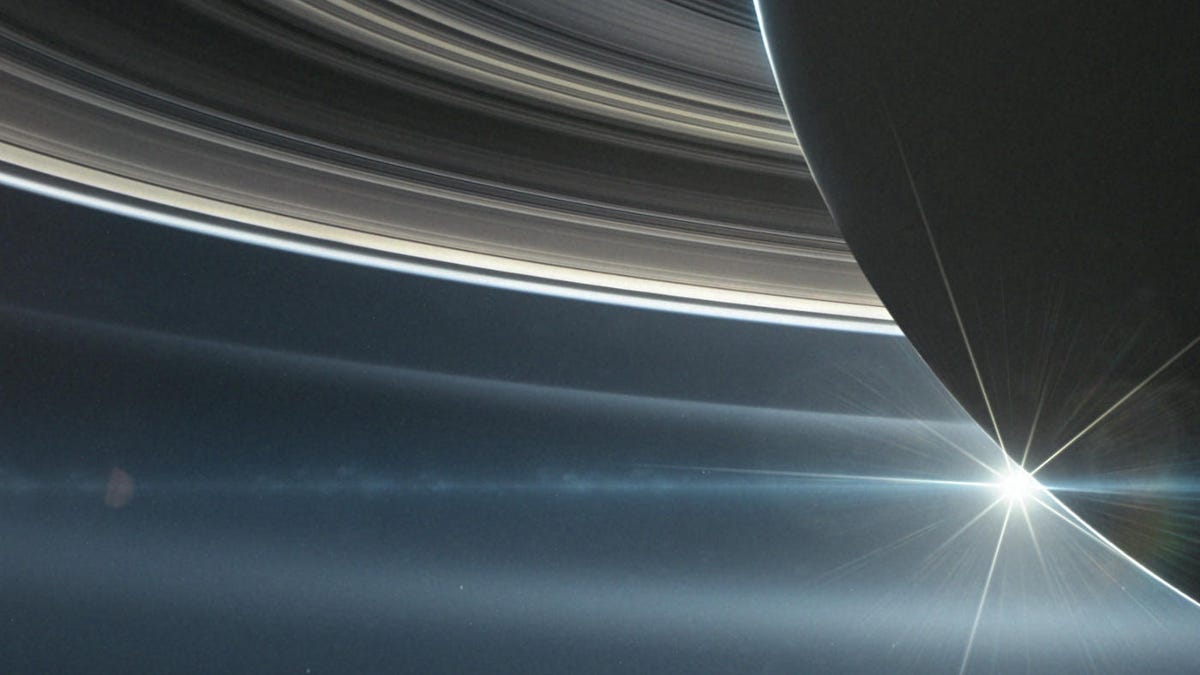NASA's Cassini reveals 'ring rain' on Saturn
Heading to Saturn? Better take your umbrella.

Cassini might have plunged to its death in Saturn's atmosphere last year, but NASA's mission to the sixth planet from the sun is still serving up fascinating findings.
Now, more than a year after scientists lost contact with the Cassini spacecraft, scientists have published new research from its final orbits, dubbed by NASA as Cassini's "Grand Finale." The key takeaway? Just like a rock star with a wad of cash, Saturn's rings are making it rain.
An illustration of Cassini orbiting Saturn.
Analysing data from Cassini, NASA researchers found evidence of particles and gases from Saturn's inner rings falling down into its upper atmosphere. And it's not just a light sprinkle -- the rings rain down roughly 22,000 pounds (10,000 kilograms) of material per second.
While some of these particles fall quickly into Saturn, NASA says others become electrically charged and "spiral along magnetic-field lines" falling to Saturn in a phenomenon called "ring rain."
And in another key finding, researchers also discovered that organic particles embedded in the water "nanograins" raining down from Saturn's rings are made up of different organic compounds to those found on Saturn's moons. That means "three distinct reservoirs of organic molecules in the Saturn system", according to NASA.
Cassini spent 20 years in space, orbiting Saturn 294 times and taking 453,048 images over that time. And even after finishing its mission in spectacular fashion -- diving between the planet and its rings 22 times in its final weeks -- it still had new information to share.
"Almost everything going on in that region turned out to be a surprise," said Cassini Project Scientist Linda Spilker. "That was the importance of going there, to explore a place we'd never been before. And the expedition really paid off -- the data is tremendously exciting."
Cassini isn't done yet -- NASA says analysis of data from the spacecraft's instruments will continue for years to come.
More on NASA's recent research can be found in Volume 362 of Science magazine.
NASA turns 60: The space agency has taken humanity farther than anyone else, and it has plans to go further.
Taking It to Extremes: Mix insane situations -- erupting volcanoes, nuclear meltdowns, 30-foot waves -- with everyday tech. Here's what happens.

